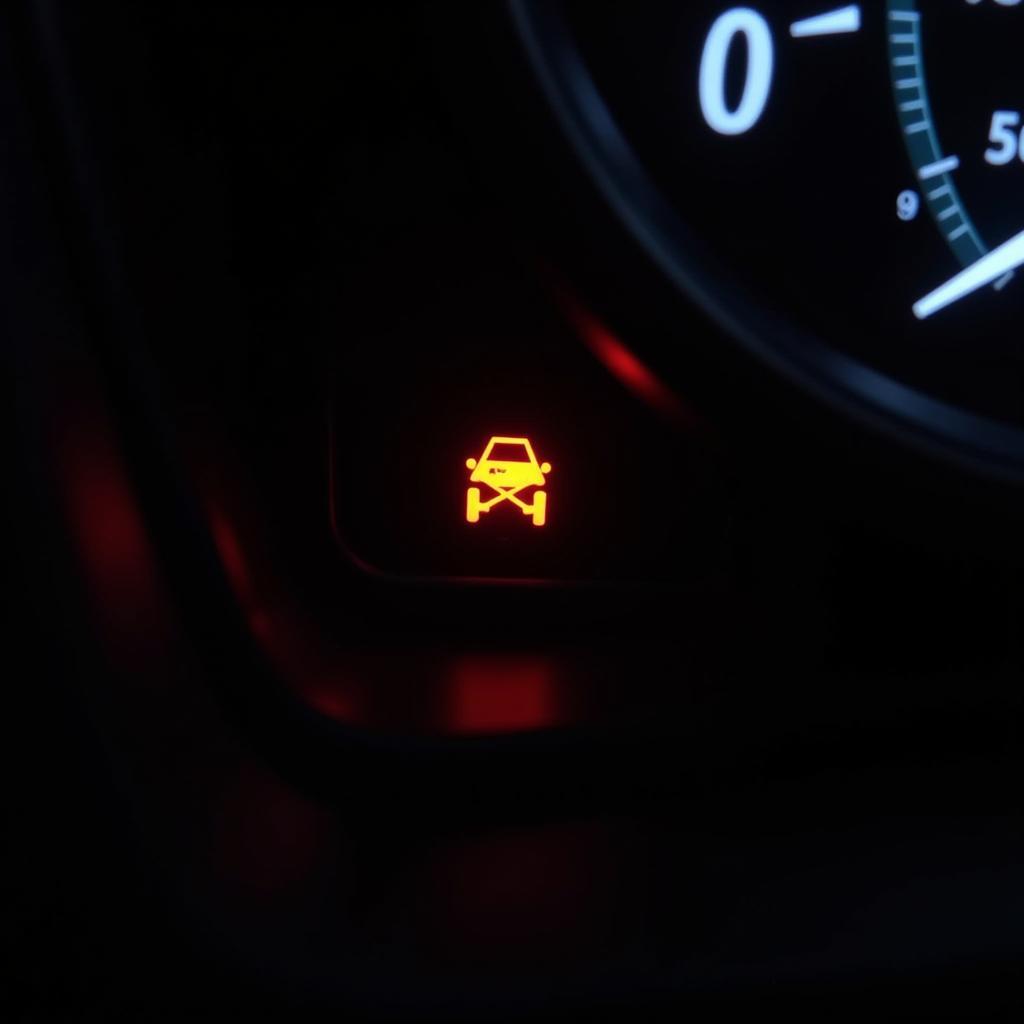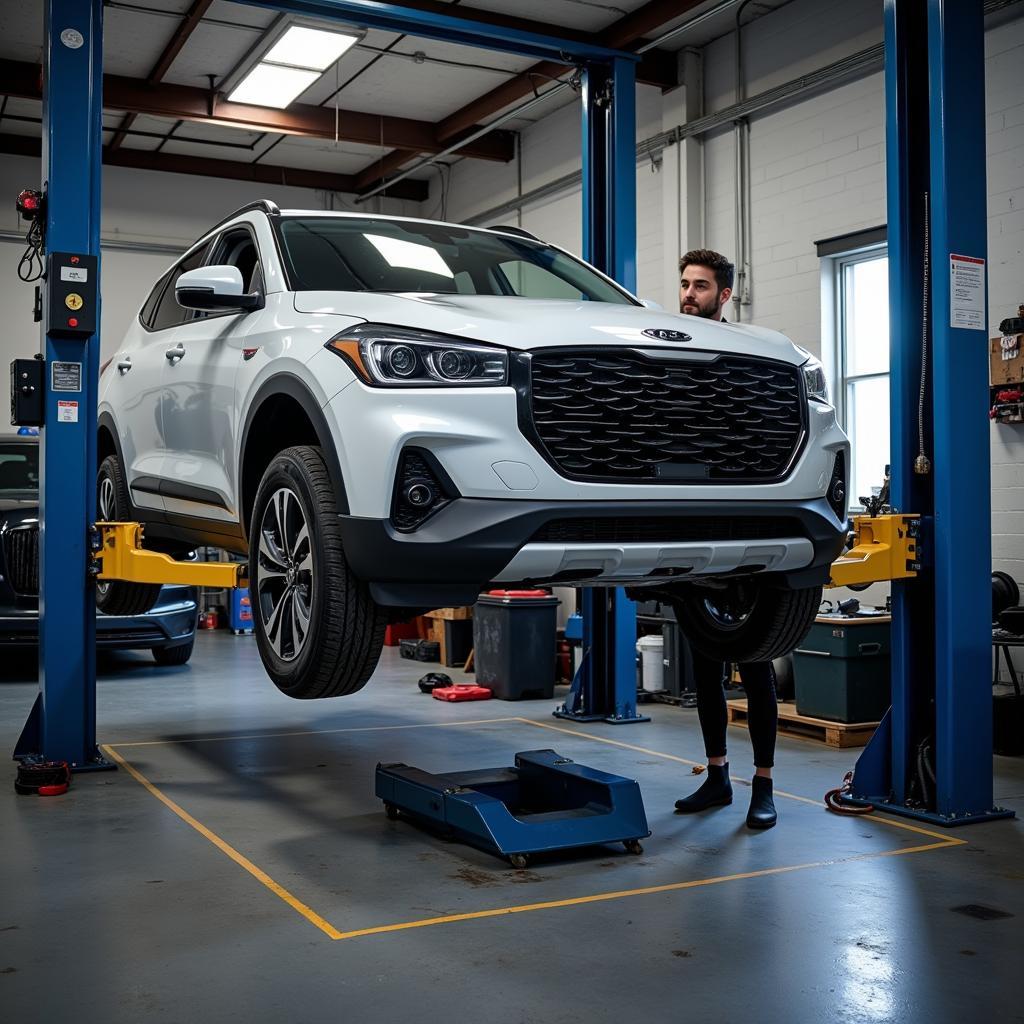Experiencing brake issues, particularly with a warning light illuminating, can be unnerving. This is especially true if it seems to coincide with rainy conditions. If you’re a 1994 Buick Lesabre SE owner dealing with a brake warning light specifically when it rains, you’re not alone. This issue, while potentially concerning, is often diagnosable and fixable. This article delves into the common culprits behind this specific problem and provides guidance on troubleshooting and resolving it.
 Brake Warning Light on a Car Dashboard
Brake Warning Light on a Car Dashboard
Common Causes of Brake Warning Lights in Wet Weather
Several factors can trigger a brake warning light, especially in wet weather. For the 1994 Buick Lesabre SE, some of the most common causes include:
1. Faulty ABS Sensor
The Anti-lock Braking System (ABS) is a critical safety feature that prevents wheel lockup during hard braking. Your Buick Lesabre SE relies on sensors at each wheel to monitor speed and modulate brake pressure accordingly. Moisture, dirt, or debris can interfere with these sensors, leading to false readings and triggering the warning light.
Troubleshooting Tip: Inspect your ABS sensors for visible damage or excessive dirt buildup. If you suspect a faulty sensor, it’s best to consult a qualified mechanic for diagnosis and replacement.
2. Worn Brake Pads
As brake pads wear down, the brake fluid level in the master cylinder naturally decreases. In rainy weather, moisture can affect the brake fluid, reducing its effectiveness and potentially triggering the warning light.
Troubleshooting Tip: Check your brake fluid level when the engine is cold. If the fluid level is low or appears dark and contaminated, it’s crucial to have your brake system inspected by a professional.
3. Wet Brake Components
Water can impact various brake components, including the drums, rotors, and calipers. Wet brakes can lead to reduced braking efficiency and may even cause a temporary drop in brake fluid pressure, triggering the warning light.
Troubleshooting Tip: If you experience the brake warning light only during or immediately after driving in heavy rain, allow your brakes to dry thoroughly. Driving cautiously and applying light brake pressure intermittently can help dry wet brake components.
Understanding Your Buick Lesabre SE’s Brake System
The 1994 Buick Lesabre SE is equipped with a four-wheel disc brake system with ABS. It’s essential to have a basic understanding of how this system works to diagnose and address issues effectively.
- Master Cylinder: This component holds the brake fluid and pressurizes the system when you apply the brake pedal.
- Brake Lines: These metal lines transport pressurized brake fluid from the master cylinder to the wheels.
- Calipers and Wheel Cylinders: These components house the brake pads and pistons that clamp down on the rotors or drums, respectively, to slow or stop the vehicle.
When to Seek Professional Help
While some brake-related issues can be addressed with basic troubleshooting, it’s crucial to seek professional help if:
- The warning light persists even after checking and addressing potential causes.
- You notice any unusual noises or vibrations when braking.
- Your brake pedal feels spongy or goes to the floor.
- You experience a loss of braking power.
 Car Undergoing Inspection in a Garage
Car Undergoing Inspection in a Garage
Conclusion
Experiencing brake issues with your 1994 Buick Lesabre SE, especially during rainy weather, can be a cause for concern. However, understanding the common causes and taking the appropriate steps can help ensure your safety and get you back on the road with confidence. Remember, when in doubt, always consult a qualified mechanic for a proper diagnosis and repair.
